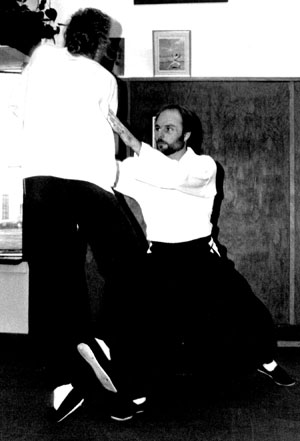Never met him directly.
Have corresponded with him a long while back.
He studied under Wong JackMan in SF...
Have a good friend who studied under Peter...back in SF..
Read his first book, Effortless Power a long while back..good read..
He was known, around the same time as Bruce Kumar Frantzis "bagua"..
Many of Peter's, ideas could be said to be an updated version of the taiji classics
..
"
Peter Ralston was born in San Francisco but raised primarily in Asia. He began studying martial arts at the age of 9 in Singapore. By the age of 20 he had black belts in Judo, Jujitsu, and Karate, had been Sumo champion at his high school in Japan, Judo and fencing champion at UC Berkeley, and had demonstrated proficiency in Kempo, Ch’uan Fa, and Northern Sil Lum Kung Fu. A growing interest in the “internal” martial arts lead him to study T’ai Chi Ch’uan, Hsing I Ch’uan, and Pa Kua Chang.
Ralston has pursued this endeavor with a passionate determination for more than 40 years. He sought out and studied with the world’s most demonstrably skilled teachers, broadening his study with such arts as Aikido, Japanese and Chinese fencing, western boxing, Muay Thai (Thai boxing), and new levels of his own investigations into all of these arts. His exceptional commitment (often practicing for more than eight to ten hours a day) and depth of study, along with his intense meditation and open inquiry have led Ralston to profound levels of skill and understanding."
He proofed his work, knowing others would question it...in the martial tradition of the past.
"Intent on revealing the depth and power of this work, in 1978 he became the first non-Asian ever to win the World Championship full-contact martial arts tournament held in
the Republic of China."
Now known as Taiwan.
"
I wanted to create an art based on fundamental observations of physics, perception, intent, impulse, and energy — an art that gears itself to meet any situation because it is founded on understanding the principles in which interaction takes place.
I wanted an art that would be adaptable and well-designed, forged through training and techniques but designed to teach something beyond the form.
The Art of Effortless Power is such an art.
~Peter Ralston

